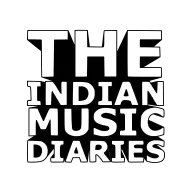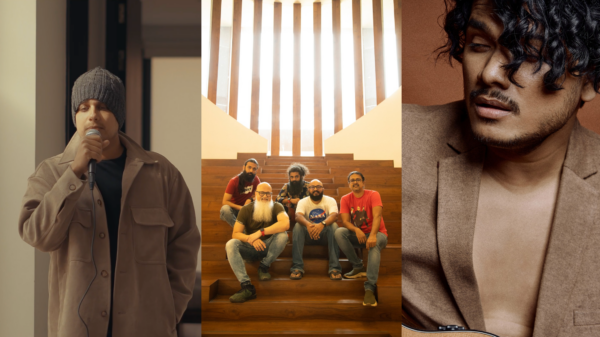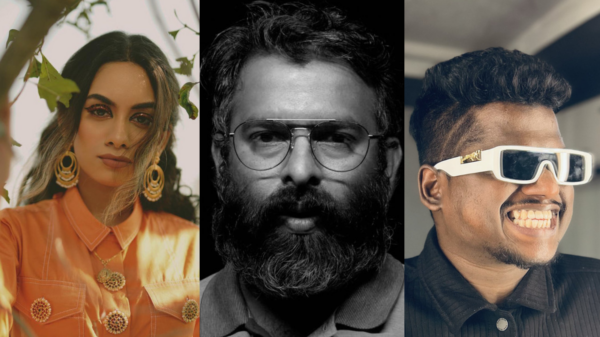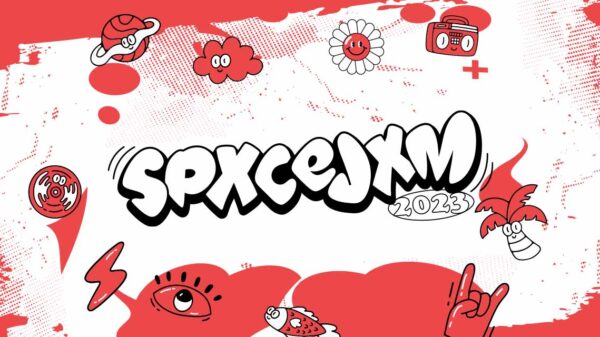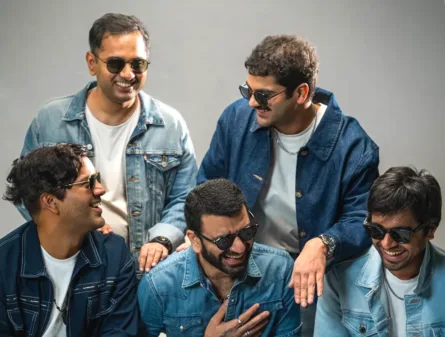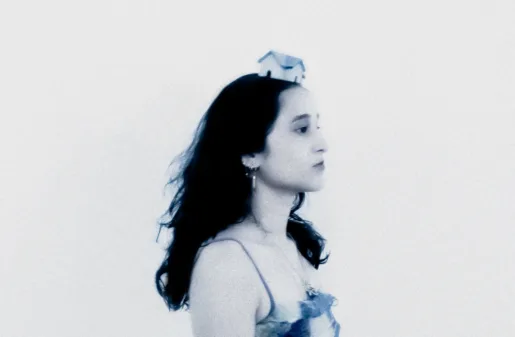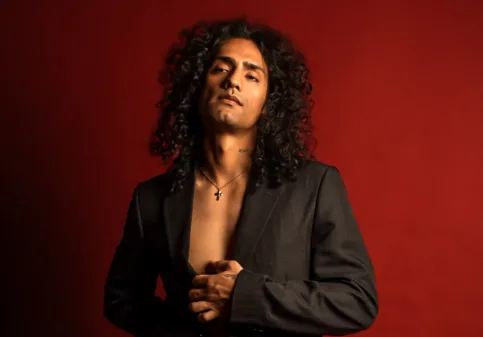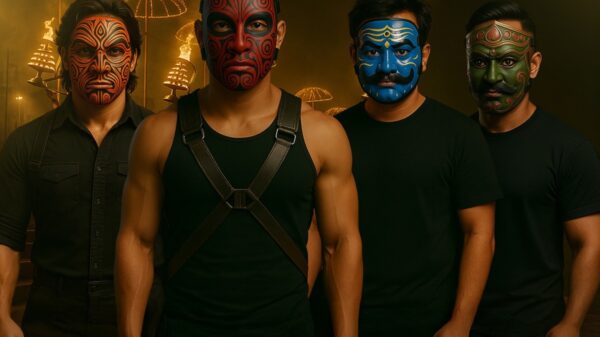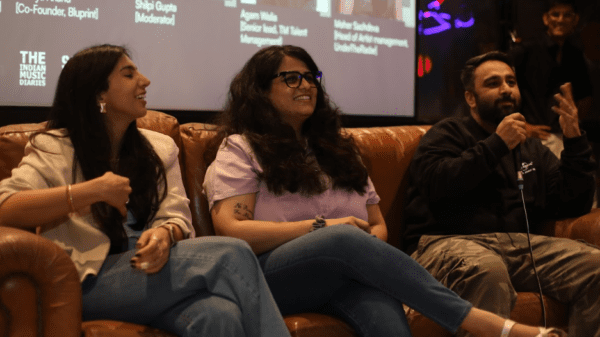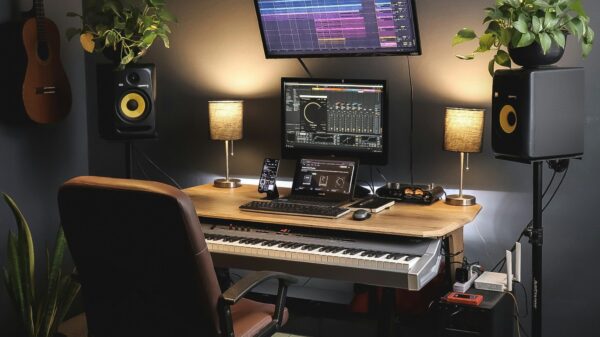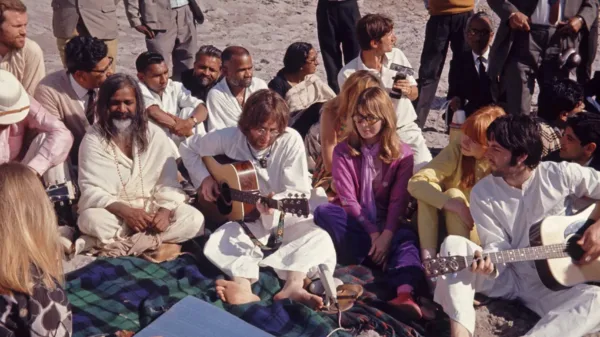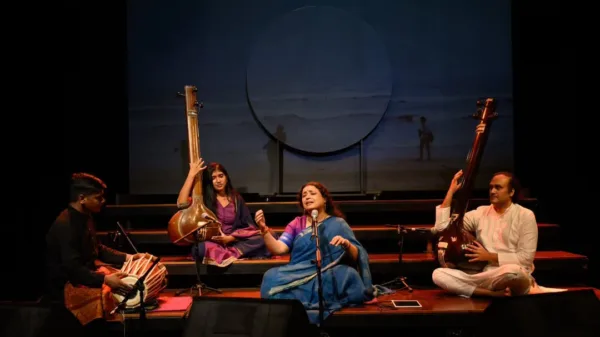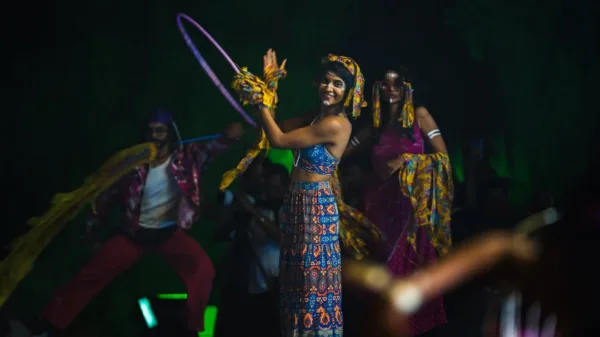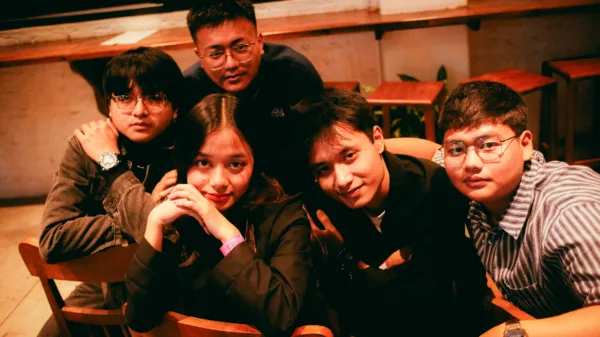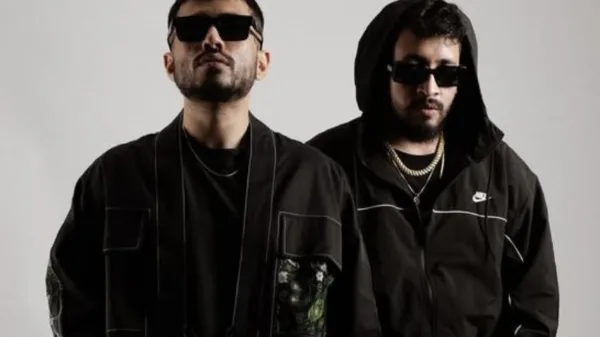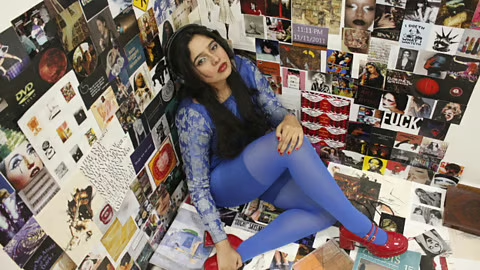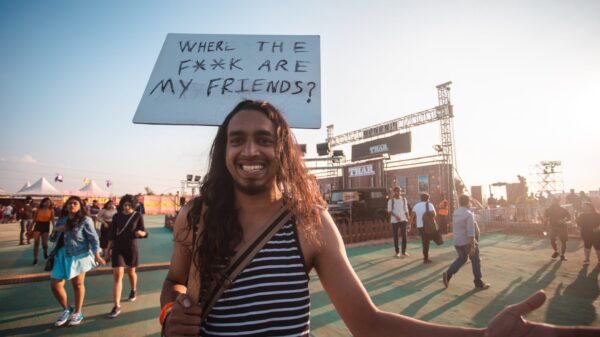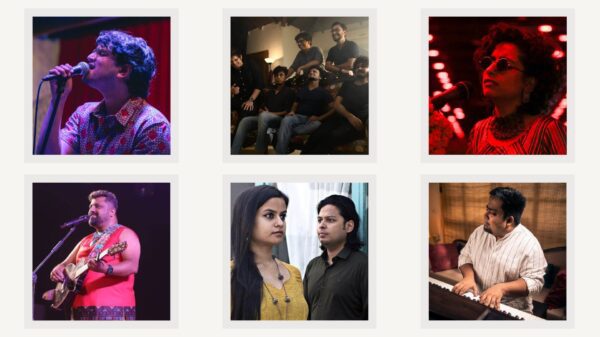No one is doing avant-garde pop in the Indian independent music scene the way Tanmaya is. Combining elements from multiple genres, inculcating sentimentality and rage, she is crafting her artistry with a sense of unboundedness that you would not usually encounter within your staple diet of being drenched in over-produced arrangements that leave you wondering if the meat grinder of trend-driven hit-making is ever going to desert you.
After her first EP which set the ball rolling on her experimental sound-making process, and multiple successful collaborations : ranging from being the only female artist featured on Bagi Munda’s Player No. 1 to having popular tracks with artists like MC Amrit and Ghabraahat Intensifies, and her first experimental EP, Tere Liye —she is all set to release her second project, Girls With Debilitated Moons. In this tell-all interview, she unveils all the ideas, beliefs and machinations that she negotiates — as she develops her art in its totality.
You are a trained musician with specializations in vocals and piano. When did you first discover your inclination towards music?
I have been inclined towards music from a very young age. My father was a rock-head and to this day loves rock music and listens to it. In the sixth grade, One Direction started becoming all the rage. However, I was some sort of a loner so I had no idea what that was? Our class went to the Scholastic Book Fair only for me to find out that it’s a band. And I noted down their name because all the girls loved it. I wanted to fit in.
In the process of trying to fit in, I found a band I really loved. It opened me up to the world of music. I tried to sing their songs, and I was really bad at it. But I just kept trying. I kept discovering new artists and new music and then a few years later I discovered that music could be learnt, there was something like a music school that would actually teach you music. So I enrolled and that’s how I entered that world.
When did you start making music? What made you realize you wanted to make music, and did you have a concrete vision right from the beginning?
I started making music in school itself – during COVID. Actually, my debut single is still out there somewhere on SoundCloud, and it is very embarrassing for me — when I come across it occasionally. I haven’t taken it down so I can remember where I started this journey from. I had no concept of pitch, no concept of structuring a song, a batchmate of mine – who was starting to get into music production — produced it. And that’s how I made my first song, recording on my phone, in scorching June heat during the pandemic, never being satisfied with the takes because — let’s face it, I didn’t know what I was doing.
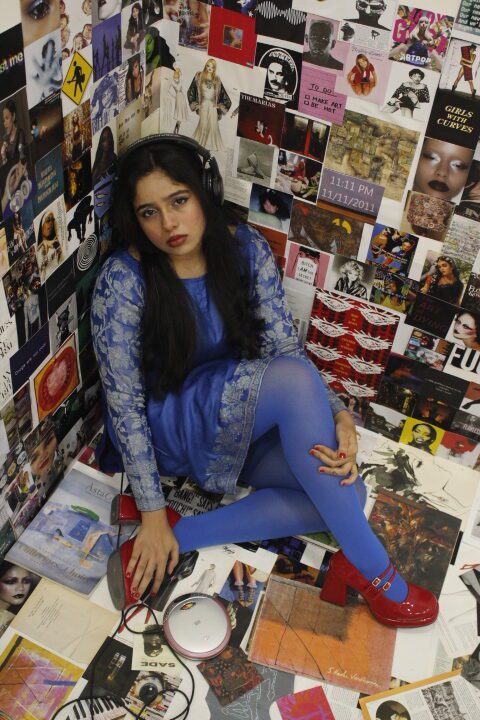
What made me realise that I wanted to make music was during the pandemic, I was being set on a path of corporate jobs by everyone around me. It just kept dawning on me over and over that I did not want to do that, and I kept putting it off. One day, nearing my 12th board examinations, I just gave up and decided that I will do music and whatever is going to happen, will happen. Didn’t listen to anyone, still don’t listen to anyone, and have proved everyone wrong, always.
I did not have a concrete vision from the start, I do now. I kept trying to be someone I was not. There aren’t a lot of role models for girls to look around here in terms of music. There are a lot of male artists, yes, but in the local vicinity, there are no experimental female artists. At one point, I realised, the person I had been looking for is me and I have to wear that responsibility.
You have stated that you have been classically trained when it comes to the piano, and also have contemporary vocal training. Do you think these have influenced the kind of music you wanted to make — or was it more of a technical ability you developed?
They have. I believe I have more theoretical knowledge than most people who enter into the music making space. For most people this proves to be a bad thing, because we forget to understand the nuances. Trained musicians often are just that, trained musicians. They are not creatives. Anyone can be a creative. And people who are untrained sometimes make better creatives because they are hungry, they want to make something that makes them feel, whereas trained musicians get a little stuck in the technical aspect of it. Classical music is a beautiful ocean to swim in. However, I am still trying to hone myself off of the ‘being the best technically skilled musician out there’ fever. It started when I hit a few walls with some collaborators.
You have said you love Florence + The Machine, FKA Twigs, SZA etc. How do these artists inspire you? Or is your art located in a separate realm from theirs?
Their music, their artistry, their persona, is a starting point and a point to reflect on when I get stuck. I just start from there and go to where the music takes me. I strive to make something that I as a listener will listen to obsessively. I am my audience, I am my target. That’s who I want to please. And when I get stuck during the creation process, I reflect on their music, what is it about their music that makes me feel? I grab that information and try to apply it to my own.
Your first public release on Spotify is Mummy. Tell me a little about this song — the conceptualisation, how did you get around to putting it out?
It is the goofiest song I have ever made. I honestly thought it was a bad song when I was putting it out, and it is one of my most loved songs – as of yet. The song mummy is a whole set of idioms packed into a song.
I will be a little cryptic because I don’t like to speak about that phase of my life anymore, but it’s essentially about people trying to control you, and you just lose your mind to the point where you develop a very self-aware case of Stockholm Syndrome and make a song like Mummy.
Tell me more about your first EP, Tere Liye. What was your creative space like, back then?
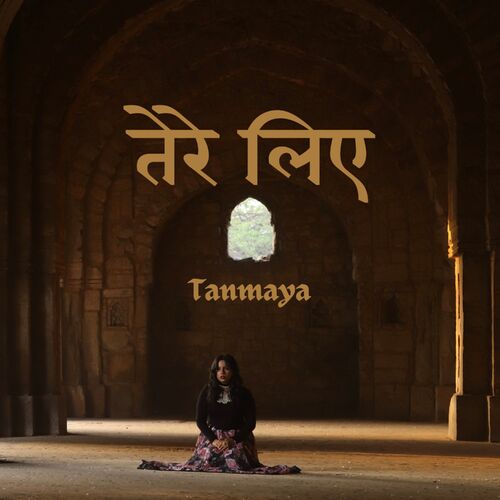
The creative space was literally just me working like crazy to get myself out of my depression. There’s nothing else like a heartbreak to break you down to nothing and then build you back up.
You have collaborated with BAGI MUNDA on TOUCHDOWN. Tell me how that came about.
I heard BAGI’s EP BETAJ BADSHAH, and even though the songs are amazing I loved the fact that there was almost an equal representation of female artists on the project. That is how we got in touch, and then he offered that I do the backing vocals for TOUCHDOWN, and I agreed.
Haseena / Khalnayak is also an intriguing collaboration with Ghabraahat Intensifies. How did that unfold?
I was familiar with GI’s first EP and I was trying to find the person who had made it. Little did I know that they were looking for me too. Ajitesh got in touch with me and that is how that song came about.
Over all the course of your career as an independent artist, how has your perspective on collaborations changed? Do you approach them differently from how you used to? Are there artists you would want to collaborate with on records of your own?
My perspective on collaborations is still developing and evolving. I think collaborations are very important. Just being in the same room as a collaborator, your energy finds its spark — which it may not if you’re sitting in a room alone and recording, which is mostly the case for me. I have a long list of people I would love to collaborate with — ranging from Dhanji, BAGI MUNDA, Rashmeet Kaur, Yashraj, Chaar Diwari, and many many more.
Your track, Har samay Har waqt, is one of the most interestingly arranged songs on your discography. Please tell me more about what led you to writing and making the song the way you have.
The process of that song was pretty quick, it started with a drum loop, I recorded the entire vocals, and got my producer to do some production on it. It is one of the tracks that I actually share production credit on, I developed the drums and the melodic elements to some extent.

That song is just a fever dream about you crossing a street and getting hit by a vehicle and essentially the feeling that nobody will come to save you. Something which unfortunately rings true in my life.
With Scorpio Moon, you are entering a new era for your own discography. What is the concept that you are developing around this one?
Scorpio Moon is my lead single off of my upcoming project ‘Girls with Debilitated Moons’. This project is the swan song to a character that I have embodied, to the refusal of some people for the past 4 years.
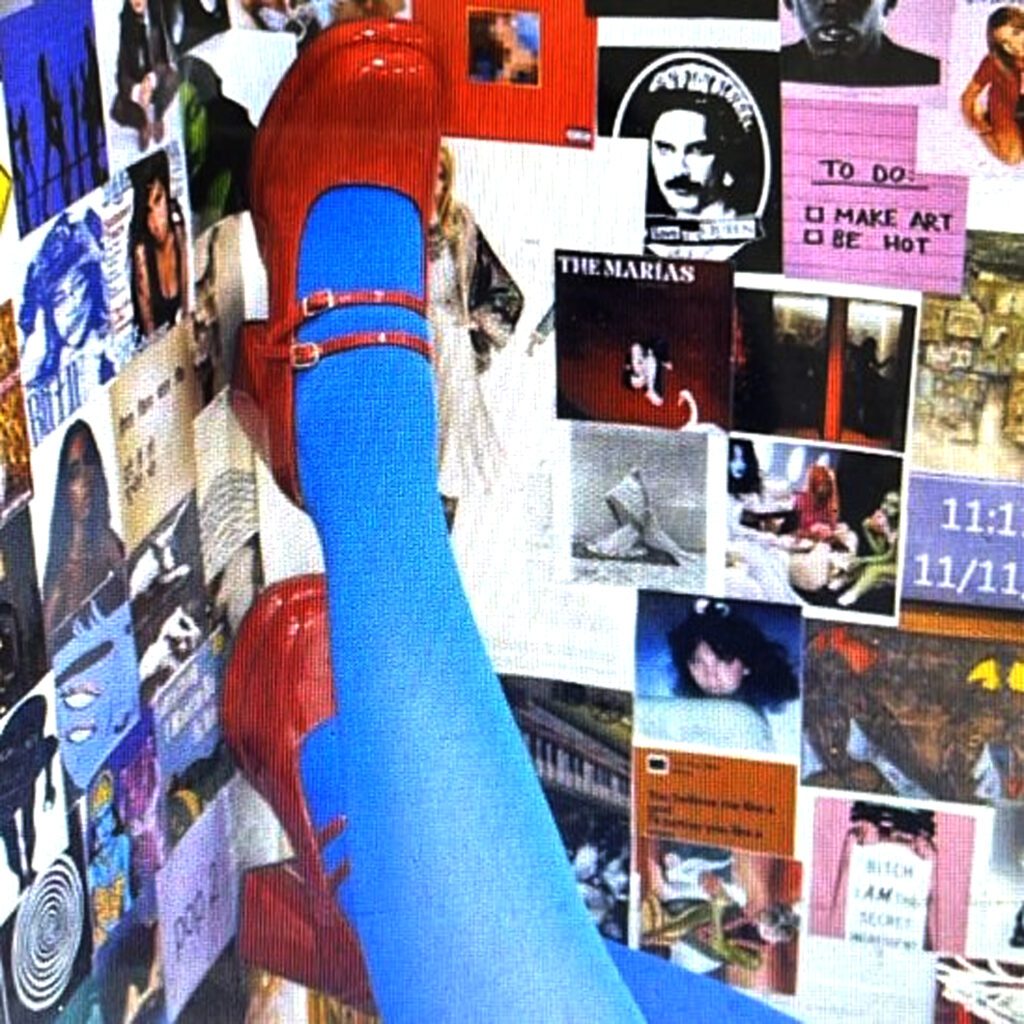
After this, I intend to start a journey of pure rebellion in my music. This project contains hints of those rebellions.
When did Girls With Debilitated Moons come up as an idea for yourself? How long has it been in the works?
Girls with Debilitated Moons has been in the works for 8 months now. It came up as an idea when I realised that before beginning my next journey I wanted to put out another project.
How does this era differ from your previous ones — musically, ideation-wise, etc.? What should your listeners be expecting from this project?
This era is a continuation and an ending of the previous eras. It differs because this time I am starting to realise what I want, better. I am starting to ideate and execute better. And I am not satisfied. And I will be carrying that into my future projects as well.
My listeners should be expecting poetry and some good-sounding things. Other than that I have planted a lot of stuff into this project, which they may or may not take away. However, the latter they will take away.
A lot of your music is very visceral in its artistry. How does that affect the music making process for you?
I want to exist in another realm while making music. I want to go to a space which has not been touched before. However, the sad thing is that I live on earth and I don’t do substances. So I have to draw from inspirations and motivations around me. So I make them my starting point and go off of those.
It is also very personal in nature, but I am assuming there is a lot of persona-building that also naturally occurs when you are making music. How do you negotiate that?
I have stopped passing the blame for anything bad that happens in my life. It is nobody’s fault. I am finally able to see the clear picture, the bigger picture which I never saw before. Everything up until now has led me to this point. I am grateful for everything. The pain, the happiness, the tears, the abandonment, the heartbreak and some bonds that will never break. I honour everything. I especially honour challenges. I used to hate being challenged, now I invite it, because it brings in growth. I couldn’t be more grateful for all the bad days I have had over the course of my young life.
Where do you want to go with your music? How do you suppose the Indian independent scene should anticipate you?
I would like to not put the future down on pages, so let’s just say that I have some plans.
I do not wish to be anticipated, I am just doing me. I am just here. I do not want to be cared for, I don’t try to be seen. I am naturally seen. I am just trying to be unafraid. I am trying to show up authentically. Your image of me is not my image. So it doesn’t concern me.
Scorpio Moon is available on all streaming platforms.
